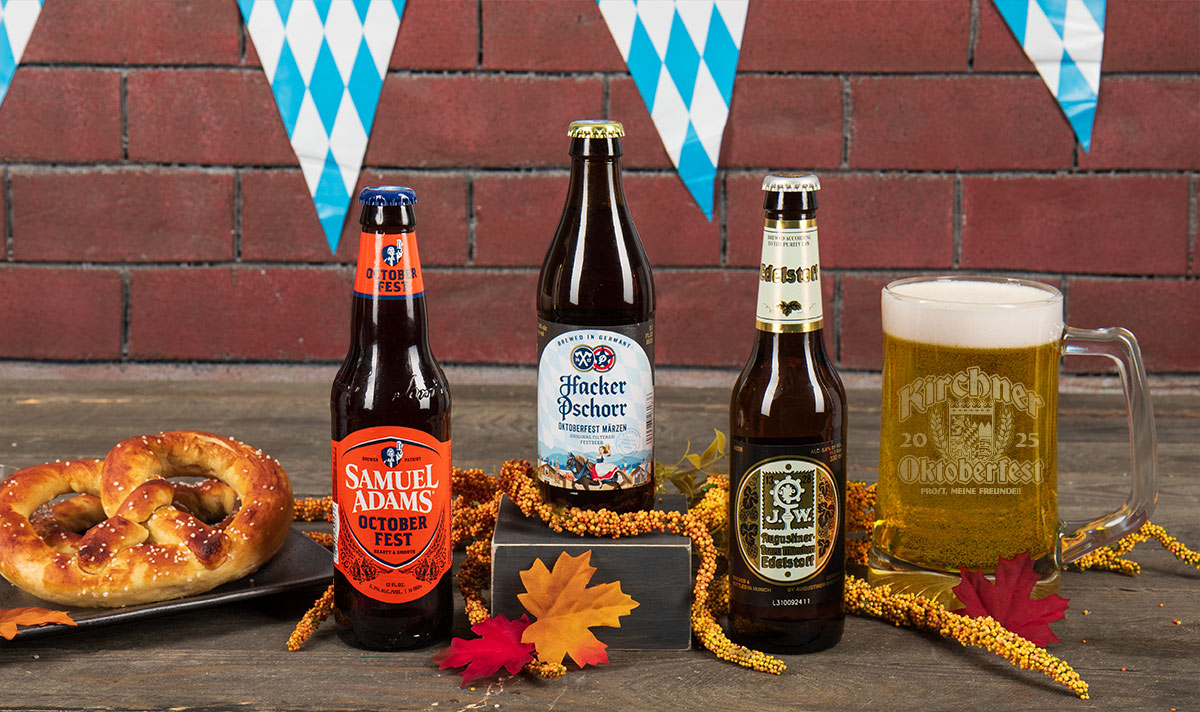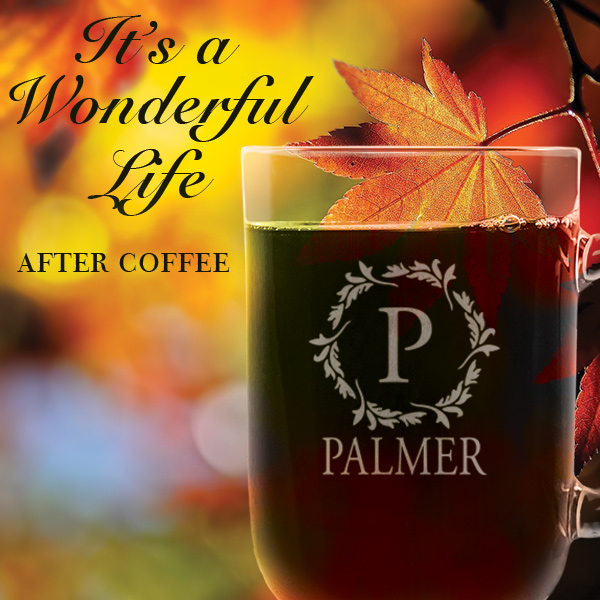Oktoberfest is all about beer. Well, not entirely, but Oktoberfest beer is a tradition worth enjoying. One of the largest folk festivals in the world, Oktoberfest began in Munich over 200 years ago. It quickly spread across the globe, because there’s nothing quite as exciting as a couple weeks of Bavarian culture, food, and beer. You don’t need an excuse for a heavy helping of lager, bratwurst, and pretzels, but Germany has given you one anyway.
Commonly called the German Beer Purity Law, the Reinheitsgebot was passed in Bavaria in 1516. It was put in place for a number of food safety and food preservation issues. Contemporary brewing innovation has rendered it obsolete, and it’s no longer enforced, but many breweries still follow the guidelines for the sake of tradition. The important thing to note is that a country deemed beer to be so important that they established laws regarding its purity a half a millennium ago. Serious beer lovers, those guys.
Oktoberfestbier
It stands to reason, then, that the official Oktoberfest would be a bit particular about which beers to include in the festival. Oktoberfestbier, or Festbier, is the pale lager served at Germany’s Oktoberfest festival. Only six authorized Munich breweries are officially permitted to serve beer at Munich’s Oktoberfest. And those beers must be brewed to specific Oktoberfestbier standards. Of course, many other breweries make “Oktoberfest style” beer, which in many cases is almost identical to the official beers. The primary difference is simply that they can’t use the word Oktoberfestbier, and they won’t be served in Munich during the festival.
I enjoy the history of beer. I enjoy talking about the nuances of flavors, the brewing processes, the social and cultural impacts. But more than all of that, I enjoy drinking beer. I got my hands on one official Oktoberfestbier, one export lager from an official Oktoberfest brewery, and one American beer made in the same style. Let’s crack them open for a taste test. Obviously, the following reviews are my personal notes, and are informed by my personal tastes and preferences. So take them as one man’s opinion; then grab a few of your own and figure out which ones are best for your festivals and parties.
The Official Oktoberfestbier
Hacker-Pschorr Oktoberfest Märzen
Hacker-Pschorr has been brewing beer since 1417, so it’s safe to assume that they know what they’re doing. This is a traditional Märzen with a deep malty flavor. It’s very malt forward, but the malt doesn’t dominate the flavor like in many American lagers. There’s a crispness to their Oktoberfest Märzen, with floral notes and hints of apples, that makes the lager refreshing and enjoyable. The bitterness of the hops is subtle, but leaves a distinct aftertaste.
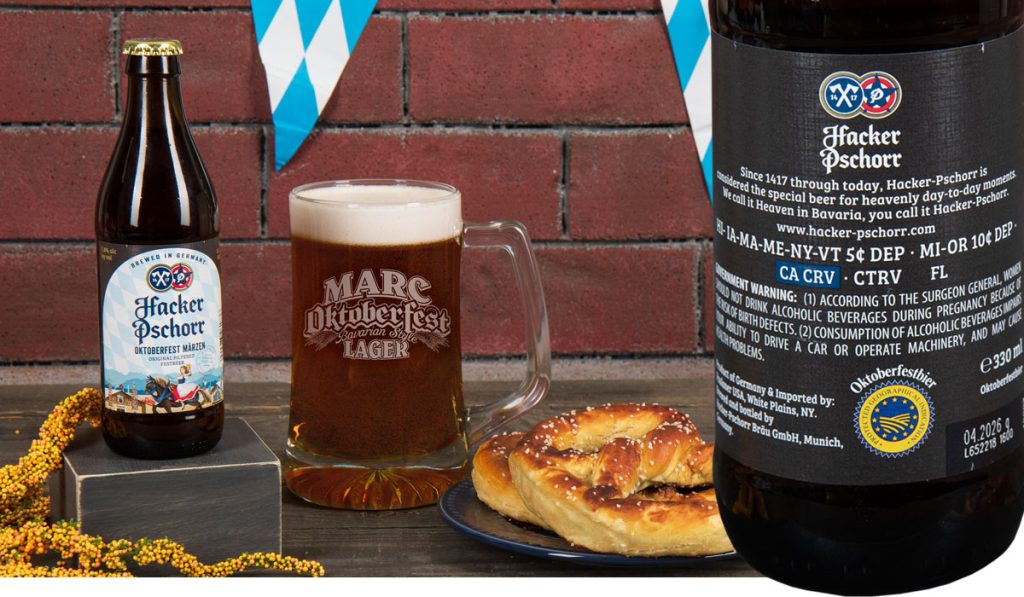
The Export Lager
Augustiner-Bräu München Edelstoff
A brewery started by Augustinian monks in 1328, we’re looking at some beers that have seen some things. The München Edelstoff has very crisp, subtly spicy hops with very smooth malt. It’s incredibly drinkable. Augustiner-Bräu takes carbonation seriously, because this is one of the most effervescent drinks I’ve ever sipped. You’d have to put your glass down and walk away for a few hours for this beer to lose its fizz. There are floral notes and dryness to the München Edelstoff, not unlike a Pinot Grigio.
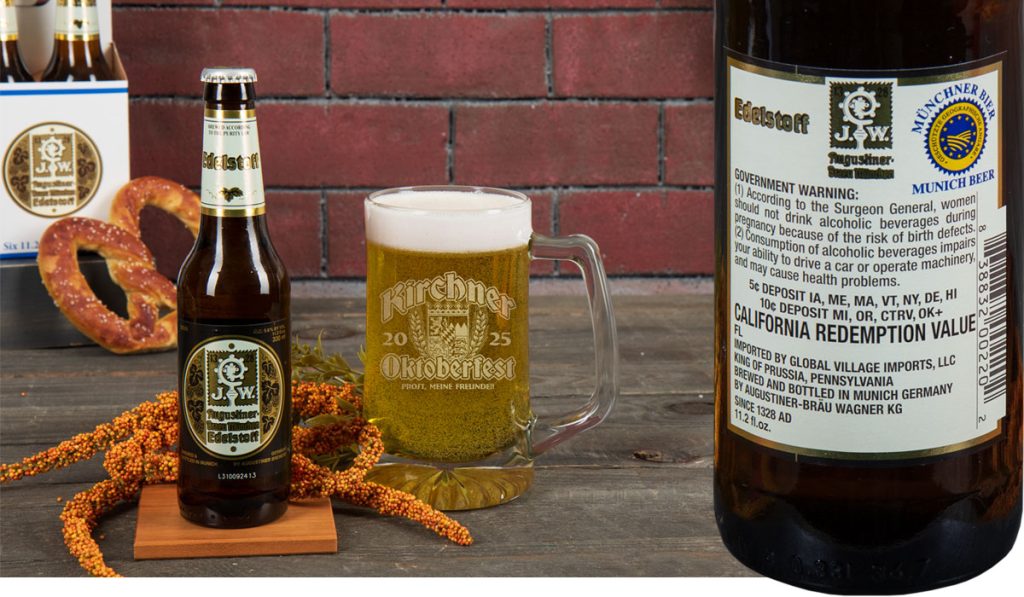
The American
Samuel Adams Octoberfest
First off, I want to acknowledge something that’s easy to overlook. Sam Adams spells this with a C instead of a K. They could have called this Oktoberfest, but I’ve always had the impression that Samuel Adams respects brewing tradition. They didn’t want to create the impression that this was an official Oktoberfestbier, despite the fact that it’s a Märzen made in the same style. Respect to Sam Adams for honoring tradition, brewing a great beer, and consciously avoiding classifying this as something it isn’t.
Samuel Adams Octoberfest is the most malt-forward of the three beers I sampled. This makes it very smooth, and just slightly heavier and creamier. It sacrifices a bit of that initial crispness for that smoothness. It’s very drinkable, with subtle notes of caramel, and a toasty, sweet aftertaste.
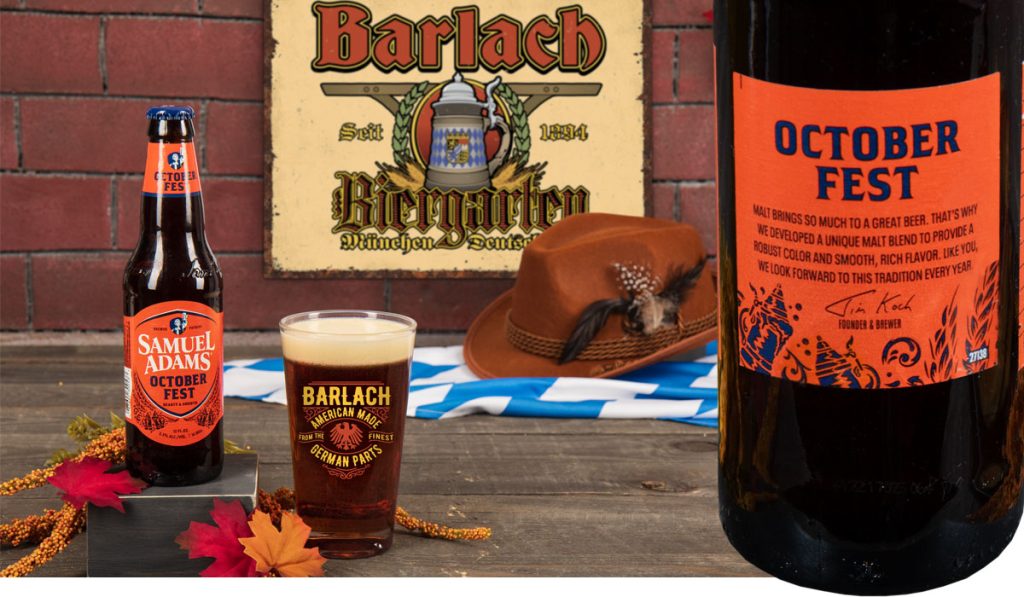
The Verdict
The differences between these three beers are pretty subtle, which means that picking a favorite really came down to just one or two very small nuances. For me, the Augustiner-Bräu München Edelstoff stood out as my top pick. And honestly, it was really just that crispness followed by dryness. The Hacker-Pschorr Oktoberfest Märzen was excellent, but the aftertaste was distracting. The Samuel Adams Octoberfest was also excellent, but after sampling the German offerings I found myself drawn to a stronger initial crispness.
However, I’m just one drinker, so my opinion doesn’t really matter. I encourage you to pick up whatever Oktoberfestbiers and Oktoberfest-style beers you can, sit back and enjoy, and decide which of them works best for you. It’s getting cooler outside. What better time for a festival of hearty food and crisp beer! Get some gear from InkPixi, pour a few rounds, dish up some bratwurst, schnitzel, red cabbage, and pretzels, and get autumn started with a couple weeks of feel-good food and drink.
- Oktoberfest Beer - September 9, 2025
- The Boozy Dark Delight - November 27, 2024
- 3 Christmas Mocktails You Need to Make Your Holiday Party a Hit - October 7, 2024


